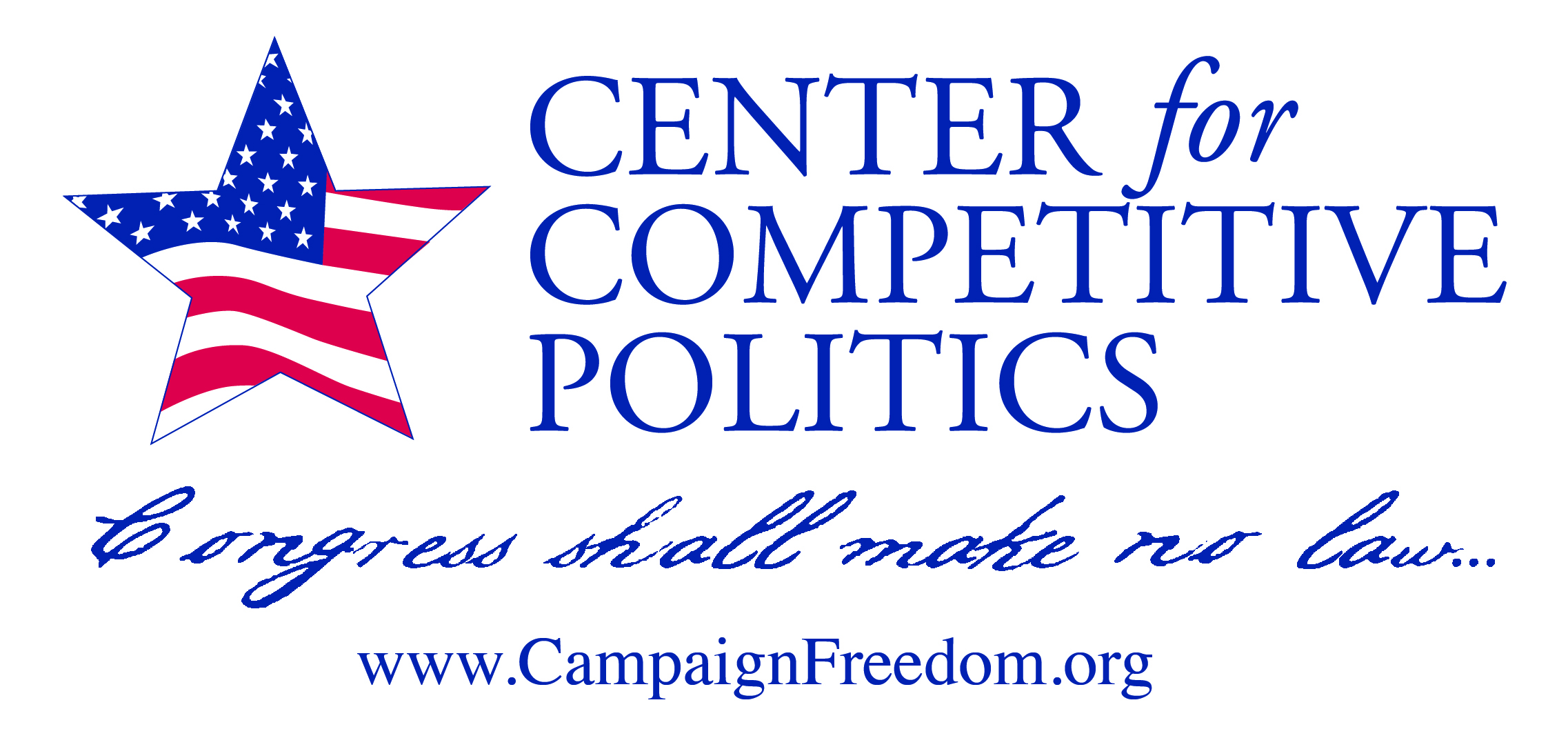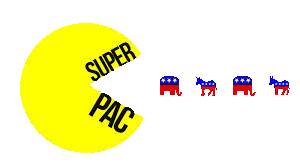In a blog post from earlier today, the Campaign Legal Center’s Brendan Fischer critiques a mid-April CCP blog post I authored highlighting “Five Lessons about Spending in the 2016 Campaign You Might Have Missed.” In his post, Fischer labels CCP’s analysis that “‘dark money’ was nearly non-existent in 2016” as “wrong,” “misleading,” and “an alternative fact.” (CCP’s wrap-up of 2016 cycle spending figures prominently noted that so-called “dark money” accounted for just 2.9% of spending in the 2016 cycle – the lowest percentage since the term was coined.) Let’s examine his claims.
Reliance on FEC Data
First, Fischer says that CCP relies solely on spending data that’s reported to the FEC, ignoring large chunks of spending from groups that aren’t required to file with the agency. This is both false and misleading. To calculate total “dark money” spending, CCP (like almost all groups in this area) relies on OpenSecrets’ (the Center for Responsive Politics) aggregation of spending by non-disclosing groups. This spending data is available here. As OpenSecrets notes in their methodology:
When we identified a group that spent money on federal politics or donated frequently to other politically active nonprofits, we manually recorded the group’s total expenditures as reported to the IRS, the total amount of money it spent on grant-making, its total revenue, any political spending it reported, the date the group filed, and the fiscal year covered.
So CCP’s calculation does indeed include more than FEC data, unless OpenSecrets’ methodology is incorrect* and they have not, in fact, included information from the IRS on additional spending. CCP’s calculation includes: (1) all groups making independent expenditures, which at all times must file reports with the FEC, (2) all electioneering communications, which must be reported to the FEC – that is, all ads within the EC window (60 days prior to the general election and 30 days prior to the primary election), and (3) political spending listed on groups’ 990s filed with the IRS as compiled by OpenSecrets. All three categories are accounted for in CCP’s calculation of “dark money.”
To illustrate his point, Fischer gives the example of One Nation, a 501(c)(4) group, to demonstrate the existence of “dark money” that CCP allegedly missed. He links to a blog post from the Center for Responsive Politics’ Robert Maguire saying One Nation spent $40 million in the 2016 cycle. CCP’s “dark money” calculation – relying on OpenSecrets’ database – lists One Nation as spending $3.4 million. So what’s the discrepancy? The answer is that Maguire’s blog post relies on One Nation press releases in which the organization claimed it spent a lot of money.
During the period covered by its latest form 990, One Nation spent nearly $6 million on ads mentioning endangered senators, according to a CRP analysis of One Nation’s press releases.
One Nation spokesperson Ian Prior confirmed in an email that, in all, One Nation spent about $40 million in the 2016 cycle, enough to put it in the top 10 of all groups active this cycle, had it reported the spending to the FEC. As it stands, though, the group only reported $3.4 million.
So what’s going on here? Option A is that One Nation is spending additional money, but it is not political, and therefore does not need to be reported (spending, for example, on fundraising efforts, issue advocacy, and overhead). The 501(c)(4) designation in the Internal Revenue Code exists to accommodate groups that spend some money on campaigns and some on issue advocacy, but expend the majority of their money for non-political purposes. If One Nation is advocating for lower taxes, or promoting pro-immigration policies, or even running ads about the dangers of chemtrails, they need not disclose that spending as political spending. CCP also doesn’t count spending from Greenpeace talking about protecting the environment, PSAs from the NFL about their work fighting to prevent concussions, or spending on ads from Coca-Cola as “dark money.” If these types of communications are included in the definition of “dark money,” then the term has no limiting principle whatsoever.
Option B is that One Nation lied in its press releases. There are any number of reasons why groups might want their spending to appear higher than it actually is. Perhaps One Nation wanted to impress existing and potential donors with their efforts, or maybe they wanted to force their political opponents to inefficiently use their resources by “countering” ads that haven’t actually run. Maybe they ran multiple press releases touting the same spending. Either way, misleading press releases are a poor metric for measuring spending – which is why CCP and OpenSecrets (normally) rely on actual spending reported to government agencies.
Option C, as Maguire implies in his blog post, is that One Nation acted illegally and is not filing appropriate documents with the IRS and the FEC. In this case, CCP is indeed “missing” this dark money spending – but so is every other organization, including Fischer’s own calculations appearing in his post. Both CCP and OpenSecrets are also missing any unreported spending made by candidates, political parties, or super PACs. This spending cannot, by definition, be measured because it is not being legally reported. No definition of “dark money” could reasonably be expected to account for such funds.
“Grey Money”
Fischer’s second claim is that CCP is ignoring “grey money” in its calculation. But “grey money” is not “dark money,” as clever readers may have deduced from the fact they have different names.
“Grey money” is a new invention referring to donations to groups that disclose their donors, made by groups that aren’t required to disclose their own. So, if a 501(c)(4) contributes to a super PAC, and that super PAC then makes independent expenditures, that is “grey money” in CLC’s worldview. CCP considers that money disclosed because the expenditure is made by the super PAC, and the super PAC discloses its donors, including the 501(c)(4).
Longstanding campaign disclosure rules attribute campaign spending to the organization with agency over the expenditure. CCP’s “dark money” calculation (and I’d add OpenSecrets’ calculation of non-disclosing groups) does the same. There is good reason for this. The group with agency over the expenditure is the only group that can control what is actually said in an ad, and it is the only group whose donors can reasonably be viewed as supporting it.
One must limit disclosure at some point, so as not to spiral indefinitely down a rabbit hole of X gave money to Y, who gave money to Z, who gave money to Alpha, who gave money to Omega. When X gave money, he did not – and could not – have tacitly endorsed the positions of Omega. We call this the “Russian Nesting Doll” problem.
Fischer and others want more disclosure rules to eliminate “grey money.” CCP thinks more disclosure carries greater costs. But this is a different policy argument about a different spending phenomenon. This is akin to saying donors to candidates aren’t required to report an e-mail address with their donation, so all candidate donations are “dark money.”
Even accounting for what newly-forged “grey money” we can pin down makes little difference. Fischer mentions LLC giving to super PACs as an example of “grey money.” There is nothing inherently nefarious about donations from LLCs. Corporate donations to super PACs are legal. And there is, further, nothing innately secretive about these types of corporations. LLC donors to super PACs in 2016 include such shady groups as “Southern Glazer’s Wine & Spirits, LLC” and the popular card game “Cards Against Humanity LLC.” Nonetheless, this type of spending amounted to just $32.2 million in the 2016 cycle (again according to OpenSecrets). Even if this figure were included in CCP’s “dark money” calculation – and it shouldn’t be for the reasons given above – it would only raise the percentage of “dark money” in 2016 from 2.9% to 3.3%.
Percentage of Total Election Spending
Finally, Fischer states that “counting dark money as a percentage of overall spending – across all races – is deliberately misleading.” He argues, without citation, that “[i]n the five most expensive U.S. Senate races in 2016, for example, between ten and twenty percent of outside spending came from entities that keep their donors secret.”
First, CCP’s purpose in calculating “dark money” is to demonstrate its impact on the political system. Thus, we measure its impact relative to political spending across the entirety of that system. Cherry-picking races to support a particular narrative about the role of money in politics, as Fischer does, invites bias into the analysis. To suggest that looking at total political spending as a metric is an invalid measure strains credulity. If anything, looking only at a selected subset of contests is “deliberately misleading.”
It is true that groups with national interests, including many 501(c) organizations that are primarily concerned about issues in addition to campaigns, are most interested in races that affect the national landscape. It is also true that candidates spend on their own local races. Neither fact dictates that we should ignore total spending.
This is especially true given the tendency of the media and activist groups to highlight the total amount of “dark money” spending in a given election cycle. Readers who are told that nearly $200 million has been spent in “dark money” deserve context for that figure. The impact of that stat varies greatly whether total spending is $400 million, $800 million, $2 billion or $6.44 billion (as it was in the 2016 cycle).
Finally, even within Fischer’s own framework of “the five most expensive U.S. Senate races” – an arbitrary cut-off that entirely ignores the House and the Presidency – he performs a sleight of hand that once again overstates the percentage of “dark money.” Fischer says that “between ten and twenty percent of outside spending came from entities that keep their donors secret.” Outside spending accounted for 65 percent of spending in those races. Outside spending. Not total spending in these five races, including spending by candidates and political parties – Fischer looks only at the “outside spending.” This means that “dark money” actually accounted for 6.5% to 13% of total spending in these five Senate elections – though a casual reader would never know it. This is assuming Fischer’s calculations are correct – a difficult to verify fact, since he has provided no citation or method for his calculation.
The number shrinks if you look at the top ten Senate races. It shrinks if you look at the top five House races. It shrinks further if you look at presidential spending. It’s smaller if you consider the number of ads, as candidates can buy ads at a cheaper rate. And It’s smaller if you take out “dark money” that comes from well-known, well-established organizations like Planned Parenthood or the Koch-affiliated Americans for Prosperity (two of the “dark money” groups that spent in the Pennsylvania Senate race). Cherry-picking as best he could, the largest “dark money” percentage that Fischer could come up with is between 6.5% and 13%.
CLC has every right to their opinion that “Dark Money Matters!” CCP’s position is that complaints about “dark money” are drastically overstated relative to the impact of that spending. A fair-minded reader can decide who has more adequately presented the facts.
*Fischer tells me that he has contacted OpenSecrets, and their methodology as stated in the “Political Nonprofits Methodology” is, in fact, different from the methodology they use when calculating the “Political Nonprofits Summary.” If that information is accurate, then CCP, like all those using OpenSecrets data, relies only on data from the FEC. This data includes all independent expenditures and all electioneering communications by nonprofits. This remains the standard metric to use for calculating “dark money.” CCP’s reasoning for why additional spending is likely not reasonably labeled as “dark money” remains unchanged.














